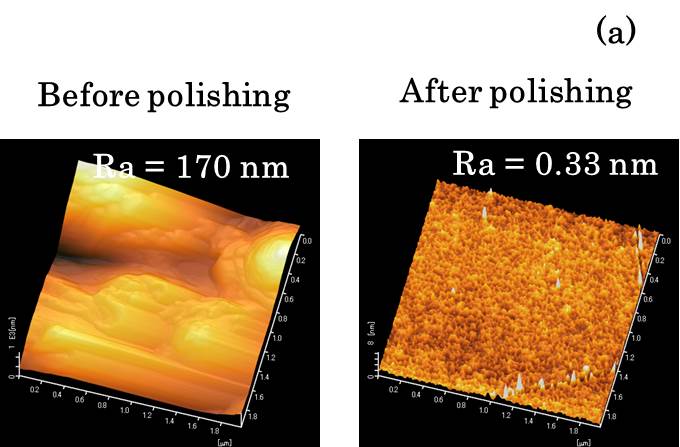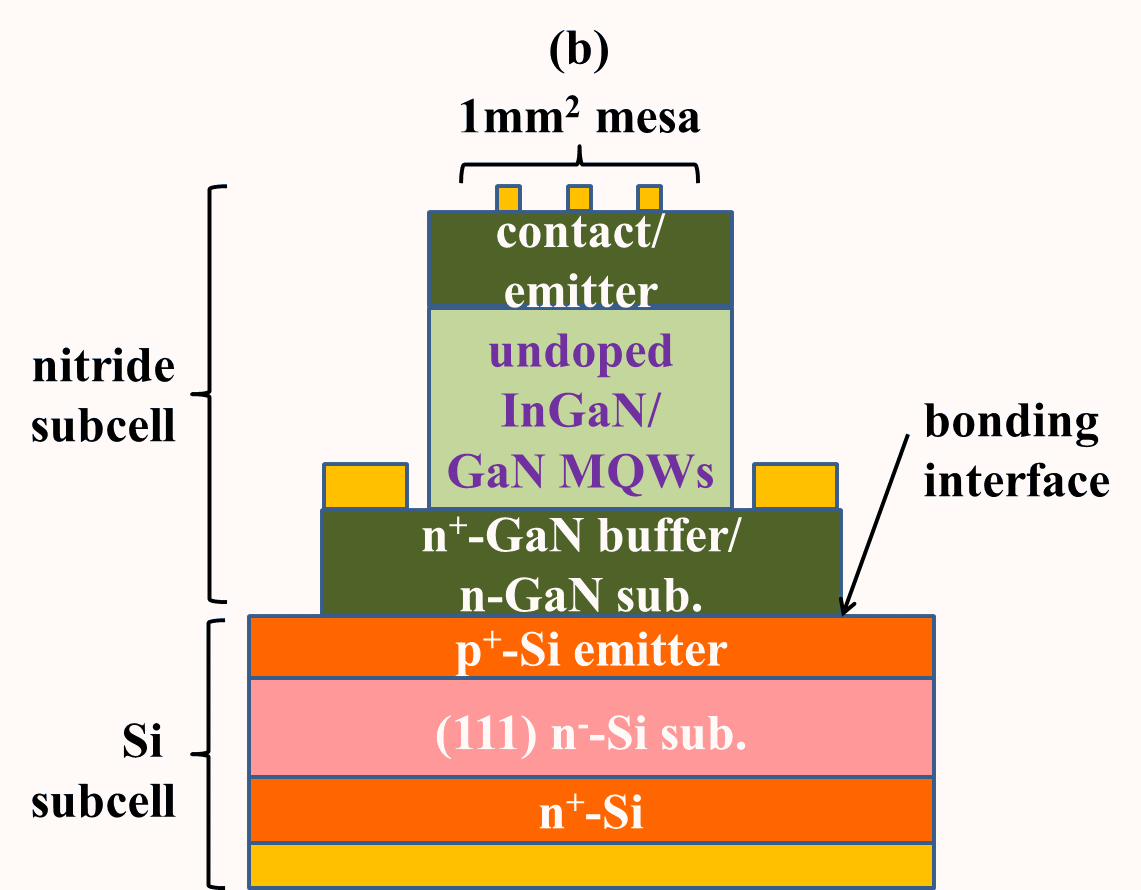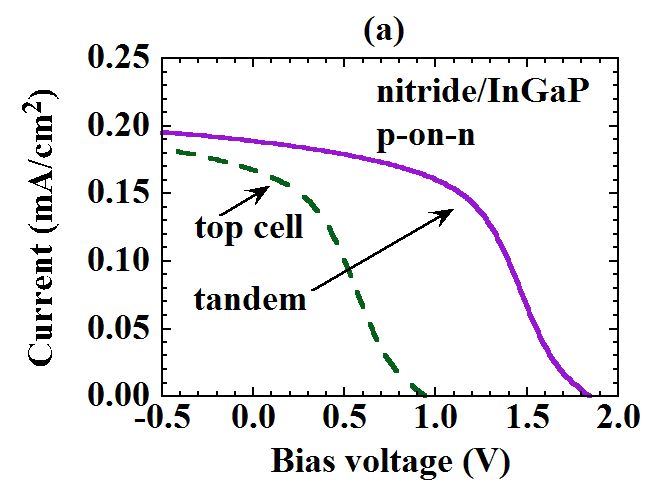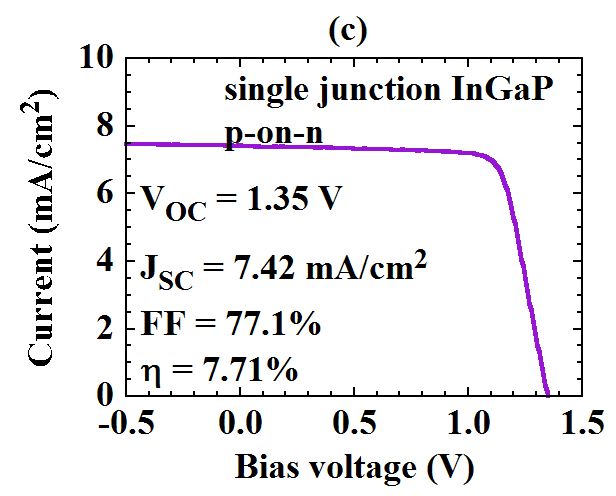The strategy for achieving higher conversion efficiencies in tandem solar cells is to increase the number of subcells while the current matching condition is fulfilled. This means that the difference in bandgap among the subcells should gets smaller. Simultaneously the optimum bandgap of the top cell should increase and is estimated to be larger than those achievable in group-III phosphides or arsenides. Thank to their large bandgaps, group-III nitrides can be a possible candidate for the materials of top cells in such an ultimate situation. Methods for good optical and electrical contacts between nitide top cells and subcells made of other materials must be established for realizing high-efficiency tandem cells in this scheme. In this work, possibility of nitride-based cells as the top cell were explored by fabricating nitride/phosphide and nitride/Si tandem cells using SAB and characterizing their properties.
(Result)
We prepared nitride-based cells by growing p-on-n cell structures on n-doped GaN substrates and employing device process sequences. The backsides of GaN substrates were polished so that its averaged roughness was improved <1 nm (See below left). Thank to the improved roughness, the backsides of GaN substrates were successfully bonded to InGaP- and Si-based bottom cells so that the nitride-on-Si and nitride-on-phosphide hybrid tandem cell structures were obtained. The schematic cross section of nitride-on-Si hybrid tandem cells is shown below right. The performances of tandem cells, top cells, and separately-made bottom cells were measured using an in-house solar simulator.
 |
 |
The I-V characteristics of nitride-on-(111)-Si tandem cells as well as nitride top cells are shown in the bottom left figure. The characteristics of (111)-Si cells are shown in the bottom right. Their open-circuit voltage (VOC) is 1.64 V (tandem cells), 1.12 V (top cells), and 0.56 V (bottom cells). The short-circuit current (JSC) of tandem cells, top cells, and bottom cells is 0.22, 0.21, and 24.0 mA/cm2, respectively.
_Si1.jpg) |
n-Si1.jpg) |
Results of characterization of nitride-on-phosphide tandem cells as well as nitride top cells are shown in the bottom left figure. The characteristics of phosphide cells are shown in the bottom right. Their VOC is 1.84 V (tandem cells), 0.94 V (top cells), and 1.35 V (bottom cells). JSC of tandem cells, top cells, and bottom cells is 0.19, 0.17, and 7.42 mA/cm2, respectively.
 |
 |
JSC of tandem cells is close to that of top cells, which means that the performance of tandem cells is limited by that of top cells. More importantly, in both nitride-on-Si and nitride-on-phosphide structures, VOC is enhanced in comparison with those of respective subcells. Especially VOC of nitride-on-Si tandem cells is approximately equal to the sum of those of nitride top cells and Si bottom cells. This result implies that the two subcells are electrically well-connected to each other.
(Note) This work was jointly performed with Univ. of Fukui and NTT Photonics Laboratories.